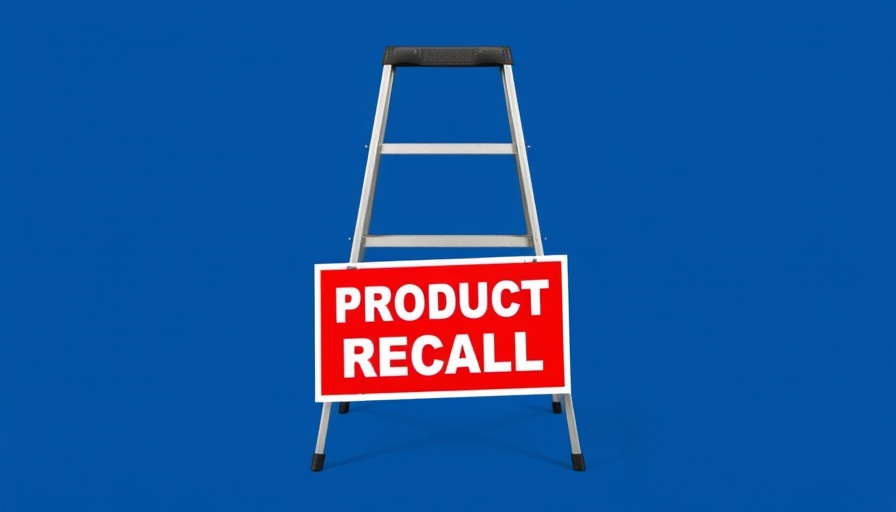
Understanding the Recall: What You Need to Know
Werner has recently announced a recall affecting over 120,000 ladders, a move that has homeowners and DIY enthusiasts reassessing their tool safety. These ladders, specifically the 20′ and 24′ Multi-Max Pro models, are under scrutiny due to a serious design flaw in their locking mechanism. The United States Consumer Product Safety Commission (USCPSC) has confirmed that this defect risks compromising the ladder's stability, thereby posing a significant fall hazard. To date, there have been reports of at least 18 falls, including multiple injuries ranging from bruises to serious fractures. Understanding the specifics of this recall is crucial for anyone who has purchased these models.
How to Identify Recalled Ladders
To determine if your ladder is affected by this recall, you should check the model and purchase date. The recalled ladders were sold at Home Depot, both in-store and online, between November 2021 and February 2024, priced between $200 and $281. If your ladder fits this description, it's imperative to stop using it immediately. It's not worth risking your safety, even if you feel competent handling projects at height.
Steps for Addressing the Recall
So, what should you do if you own one of these ladders? The USCPSC advises registering on the Werner recall website to begin the process of obtaining a refund. Once registered, you will receive detailed instructions on how to properly dispose of the recalled ladder. Following disposal, you can expect to receive a full refund by check from Werner. This process not only helps ensure your safety but also holds the manufacturer accountable.
The Importance of Ladder Safety in Home Maintenance
Ladders are essential tools for homeowners, especially for those who take on DIY projects and home repairs. However, safety should always come first. In 2019, nearly 300,000 ladder-related injuries were reported in the U.S., illustrating how vital it is for users to familiarize themselves with safety protocols. This recall serves as a stark reminder that even trusted brands can have oversights, making it essential for consumers to stay informed about their tools.
Alternative Ladder Options for DIY Projects
For those finding themselves without their trusty Werner Multi-Max Pro, it’s a good time to consider alternative ladder options that prioritize safety. Options such as aluminum extension ladders or fiberglass varieties may offer more stability and reduced fall risk, particularly for high-reach projects. When selecting a new ladder, look for models with robust locking mechanisms and a weight capacity that comfortably exceeds your needs. Before purchasing, consider checking user reviews and safety ratings to ensure you’re making an informed decision.
Conclusion: Safety First in DIY Projects
This recall is an important event in the realm of home maintenance, serving as a critical reminder of the importance of ladder safety. If you own affected models, don't hesitate to initiate the recall process, and take this opportunity to reevaluate your safety measures when tackling home repair projects. Your health and well-being should always be your top priority!
 Add Row
Add Row  Add
Add 



Write A Comment